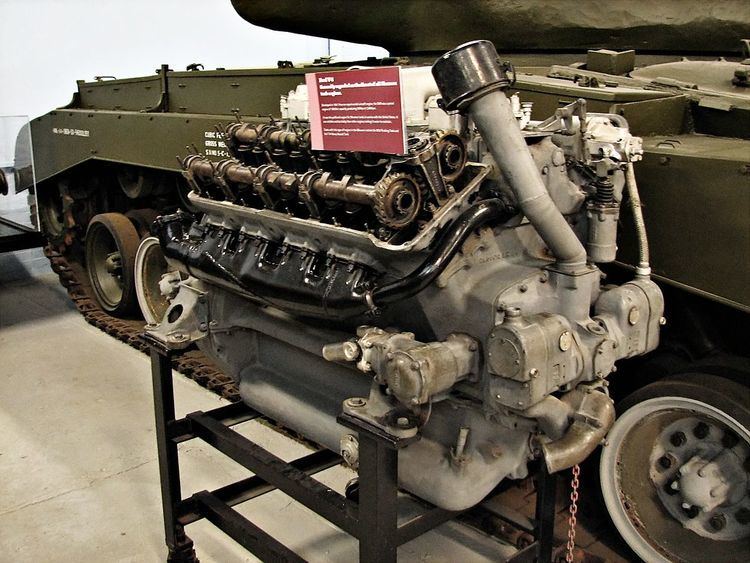Configuration 60° V8 Cylinder bore 5.4 in (137 mm) | Production 1940 - 1950 Displacement 1,100 cu in (18 L) Piston stroke 6.0 in (152 mm) | |
 | ||
The Ford GAA engine is an American all-aluminum 32-valve DOHC 60-degree V8 engine engineered and produced by the Ford Motor Company just before, and during, World War II. It featured twin Stromberg NA-Y5-G carburetors, dual magnetos and twin spark plugs making up a full dual ignition system, and crossflow induction. It displaces 1,100 cu in (18 l) and puts out well over 1,000 pound-feet (1,400 N·m) of torque from idle to 2600 rpm. The factory-rated output was 525 hp (391 kW) @ 2800 rpm. In terms of its capacity, the GAA was the largest mass-produced gasoline V8 engine in the world.
Contents
The GAA powered several models and derivatives of the M4A3 medium tank.
Development
Immediately preceding World War II, Ford developed an aircraft engine similar to that of the American Allison engines of that era. It was a 60 degree V-12 with aluminum block and head, dual overhead camshafts, and four valves per cylinder. The intention of this design was to help Ford break into the anticipated large market for fighter engines. This engine was built to typical aircraft standards: it was light, high performance, and highly reliable. Everything was safety wired or staked with close attention to detail on every part. Available information suggests this design performed well.
However, it never went into production as an aircraft engine due to the United States Navy's decision to only use radial engines for its aircraft, and the Army's contractual commitments to existing manufacturers.
With the approach of war, increasing orders for the M4 tanks were causing supply issues with the Wright R-975 engine used. The U.S. Army decided they needed to source an additional engine supplier, choosing the Ford GAA (now cut down from 12 cylinders to 8) for various applications.
